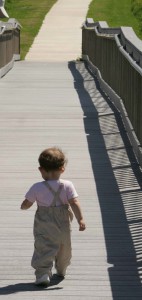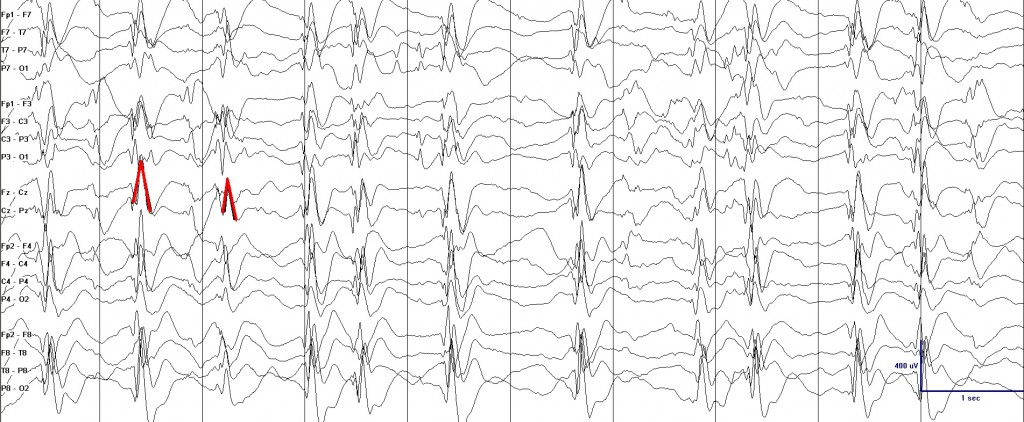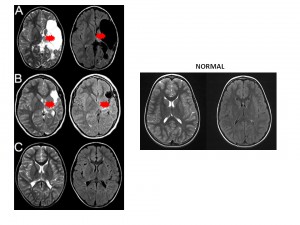
Excess brain electrical activity at night can disrupt development -- but if found, may be treatable.
This is the second post in a series about new approaches for seizures and epilepsy. Read the first post here.
When a 2- or 3-year-old child begins losing milestones like language, walking skills and fine motor abilities, or is slow to achieve them, it’s devastating for families. The good news, at least for some children, is that it might be treatable.
Tobias Loddenkemper, MD, a neurologist in the Epilepsy Center at Boston Children’s Hospital, suspected that some children with developmental delay have seizure-like activity in the brain at night. These spikes of electrical activity, referred to medically as sleep-potentiated epileptiform activity, can be readily and inexpensively detected by electroencephalography, or EEG, and readily treated with nighttime anti-seizure drugs.
But likely, no one’s thought of it. “Very few physicians have been looking to see what’s happening at night,” Loddenkemper says.
He and research fellow Iván Sánchez Fernández, MD, with other colleagues, decided to look themselves. They reviewed overnight EEG recordings from 147 patients who were seen at Boston Children’s over a 14-year period. They found that 100 of the 147 children indeed had prominent spikes in their EEGs during the night – and about one in five of them did not have known epilepsy.

Each wavy horizontal line on this child’s EEG shows electrical activity in different regions of the brain. Spiky triangular waves, like those highlighted in red, appear continuously during sleep, reflecting constant epileptic-like activity. Few such spikes were present in this child's daytime EEG.
“Kids can have an almost normal EEG while awake, but show increased spikes during sleep,” says Loddenkemper.
MRI imaging, also done on the children, suggested that the spikes may reflect early, unrecognized strokes or other early injuries to the developing brain. Brain lesions were found in 48 percent of the children with spikes, but in only 19 percent of those without spikes; lesions in the thalamus were especially common. Early stroke was the single most common type of brain injury, found in 14 percent of children with spikes but none of the controls.

These MRI images show brain lesions in children found to have nighttime EEG spikes. In A and B, a large lesion in the left thalamus is shown in red, in two separate views; in C, a more subtle lesion on both sides of the brain makes both thalami smaller. For comparison, the brain at right is normal.
Loddenkemper and Sánchez Fernández speculate that these early brain injuries disrupt circuit formation in the developing brain, making it over-excitable – and leading to too much cross-talk that can impinge on learning and development. The EEG spikes were most often seen during slow-wave sleep, a phase when memories are formed; if this phase is always interrupted by spikes, learning ability is likely to be impaired, Loddenkemper says.
“We know that children lose skills and show features of autism when these spikes appear,” he says. “These children lose out on a critical period of brain development and may never fully catch up later in life.”
Loddenkemper is urging his fellow physicians to consider sleep EEG monitoring more often in children not meeting developmental milestones, and to consider giving medications at bedtime if heightened brain electrical activity is found. In a recent study, Loddenkemper, Sánchez Fernández and several other epileptologists found that high doses of Valium before sleep reduced nighttime spiking.
He and Sánchez Fernández are now developing a larger clinical trial to test the effects of a newer benzodiazepine dosed in the evening. They expect this trial will provide a better understanding of how nighttime seizure-like activity influences autistic features and loss of developmental milestones.
“Developmental delay may be the only clinical finding in some children,” says Loddenkemper. “You can’t pick up the source unless you do a nighttime EEG, and there’s a therapy for it.”
You can read more on Loddenkemper’s work in the Wall Street Journal.






